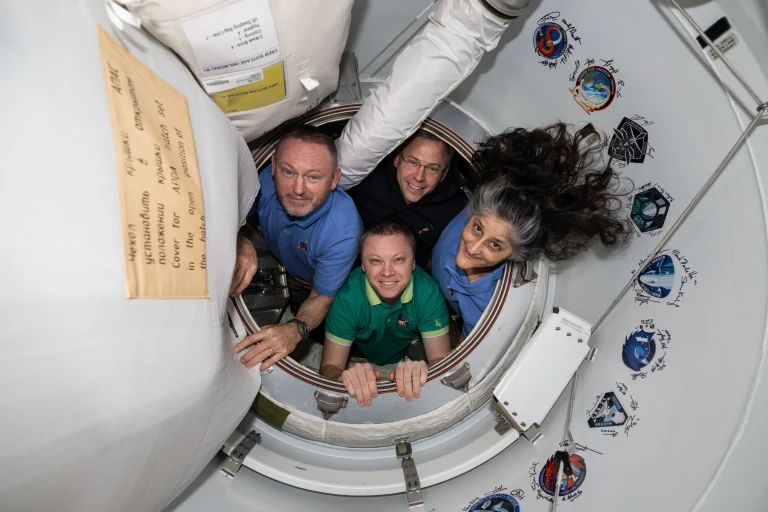
In this image from Dec. 8, 2017, four reindeer walk past the Balloon Array for Radiation-belt Relativistic Electron Losses, or BARREL, payload on the launch pad at Esrange Space Center near Kiruna, Sweden. BARREL primarily measured X-rays in Earth’s atmosphere near the North and South Poles. These X-rays are caused by electrons that rain down, or precipitate, into the atmosphere from the giant swaths of radiation that surround Earth, called the Van Allen Belts. Understanding this radiation and its interaction with Earth’s atmosphere helps us to learn about planetary radiation belts, and to better protect satellites that orbit Earth.
The primary BARREL mission ended when scientists sent their last balloon over Sweden on Aug. 30, 2016. Recovered BARREL payloads were launched as targets of opportunities on three additional flights. In addition to X-ray instruments, several of the BARREL balloons also carried instruments built by undergraduate students to measure the total electron content of Earth’s ionosphere, as well as the low-frequency electromagnetic waves that help to scatter electrons into Earth’s atmosphere.
See more photos from the BARREL mission.
Image Credit: NASA
在这张2017年12月8日的照片中,四只驯鹿走过瑞典基鲁纳附近埃塞尔伦治航天中心发射台上的辐射带相对论电子损失气球阵列(BARREL)有效载荷。BARREL主要测量地球南北极附近大气中的X射线。这些X射线是由环绕地球被称为范艾伦带的巨大辐射带向大气中降落或沉淀的电子引起。了解这种辐射及其与地球大气层的相互作用有助于我们了解行星辐射带,并更好地保护绕地球运行的卫星。
2016年8月30日,当科学家们在瑞典上空发射最后一个气球时,BARREL的主要任务结束了。回收的BARREL有效载荷作为机会目标在另外三次飞行中发射。除了X射线仪器,几个BARREL气球还携带了由本科生制造的仪器,用于测量地球电离层的总电子含量,以及有助于将电子散射到地球大气层的低频电磁波。
图片来源: NASA






